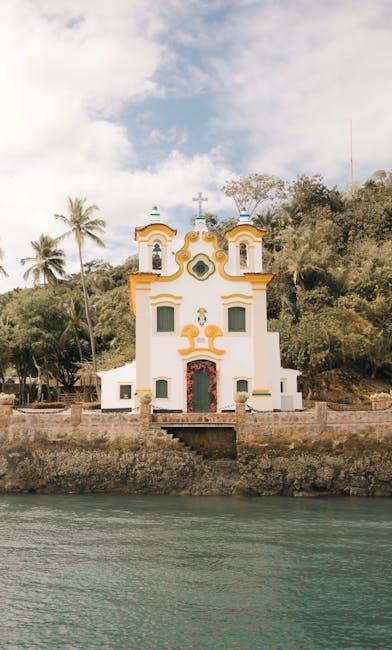In the bustling crossroads where the world’s wanderlust meets the rich tapestry of local traditions, a silent tug-of-war unfolds. On one end, the vibrant allure of tourism promises economic prosperity and cultural exchange. On the other, the delicate threads of heritage risk unraveling under the weight of commercialization and homogenization. This intricate dance between preservation and progress invites us to ponder: Can the treasures of culture withstand the tides of global curiosity? As destinations transform under the gaze of countless visitors, we embark on a journey to explore the balance between welcoming the world and safeguarding the soul of a place. Welcome to the complex arena where tourism and tradition meet—a space where the stakes are as high as the hopes that fuel them.
Balancing Act: The Cultural Cost of Tourist Influx
In the bustling heart of popular tourist destinations, the delicate tapestry of local culture often finds itself stretched thin. The influx of visitors, while beneficial for the economy, can inadvertently erode the very cultural essence that attracts them in the first place. Local traditions may become commodified, turning once-sacred rituals into mere spectacles for smartphone-wielding spectators. This transformation can lead to a homogenization of unique cultural identities, with communities adapting their practices to cater to tourist expectations rather than preserving their authentic heritage.
Amidst this dynamic, several key issues arise:
- Commercialization of Culture: Traditions risk becoming performance art for tourist entertainment.
- Displacement of Locals: As demand for tourist amenities increases, locals may find themselves pushed out of their own neighborhoods.
- Environmental Strain: Natural sites may suffer degradation due to increased foot traffic.
Communities are tasked with a challenging balancing act, striving to maintain their cultural integrity while embracing the economic opportunities that tourism presents. The solution lies in fostering a symbiotic relationship between tourists and locals, where respect and understanding pave the way for sustainable cultural tourism.

Heritage vs. Hospitality: Navigating the Fine Line
In the ever-evolving landscape of global tourism, the balance between preserving cultural heritage and catering to the demands of modern hospitality is delicate. Travelers flock to destinations rich in history, seeking authenticity and a connection to the past. However, this influx often pressures local communities to adapt their traditions to meet tourist expectations, sometimes at the expense of the very culture they aim to celebrate.
- Cultural Commodification: Traditional crafts and rituals are often transformed into marketable experiences, diluting their original significance.
- Infrastructure Overhaul: To accommodate tourists, historic sites may face renovations that alter their authenticity, blending ancient charm with modern convenience.
- Community Displacement: Rising demand for accommodations can lead to local residents being priced out of their neighborhoods, shifting the cultural fabric.
While the economic benefits of tourism cannot be overlooked, stakeholders must strive for a synergy where heritage and hospitality coexist harmoniously. This involves thoughtful planning and policies that prioritize cultural integrity, ensuring that tourism enriches rather than erodes the soul of a destination.

Empowering Communities: Strategies for Sustainable Tourism
As the global tourism industry continues to flourish, the delicate balance between promoting local economies and preserving cultural heritage becomes increasingly precarious. Sustainable tourism offers a promising solution by empowering communities to actively participate in shaping their destinies. Here are some strategies that can foster this balance:
- Community Involvement: Encourage local residents to take part in decision-making processes, ensuring their voices are heard and respected. This can lead to more authentic and meaningful experiences for visitors.
- Cultural Education: Develop programs that educate tourists about local traditions and customs, fostering respect and appreciation for the culture they are experiencing.
- Local Entrepreneurship: Support small businesses and artisans by creating platforms for them to showcase their crafts and services. This not only boosts the local economy but also preserves traditional skills and knowledge.
- Environmental Stewardship: Implement practices that protect natural resources and landscapes, which are often integral to a community’s cultural identity.
By integrating these strategies, communities can transform the challenges of tourism into opportunities for cultural preservation and economic growth, ensuring that their unique heritage is not only protected but celebrated.

Guardians of Tradition: Implementing Effective Preservation Policies
In the complex dance between tourism and cultural preservation, the role of policymakers emerges as crucial. They act as the guardians of tradition, tasked with crafting strategies that protect heritage while accommodating the influx of global visitors. A successful approach often involves a multi-faceted strategy that addresses the needs of local communities, tourists, and the heritage sites themselves. Here are some key elements that can form the backbone of effective preservation policies:
- Community Involvement: Engaging local communities in the preservation process ensures that the traditions and values they hold dear are respected and maintained.
- Education and Awareness: Educating tourists about the cultural significance of sites can foster respect and appreciation, reducing the risk of inadvertent damage.
- Sustainable Tourism Practices: Implementing guidelines that limit visitor numbers and manage the environmental impact helps maintain the integrity of cultural sites.
- Technological Integration: Utilizing technology to monitor and manage tourist flows can help prevent overcrowding and the wear and tear it causes.
Balancing tourism with cultural preservation requires a delicate touch, but with thoughtful policies in place, it’s possible to honor traditions while embracing the benefits of a global audience.






























